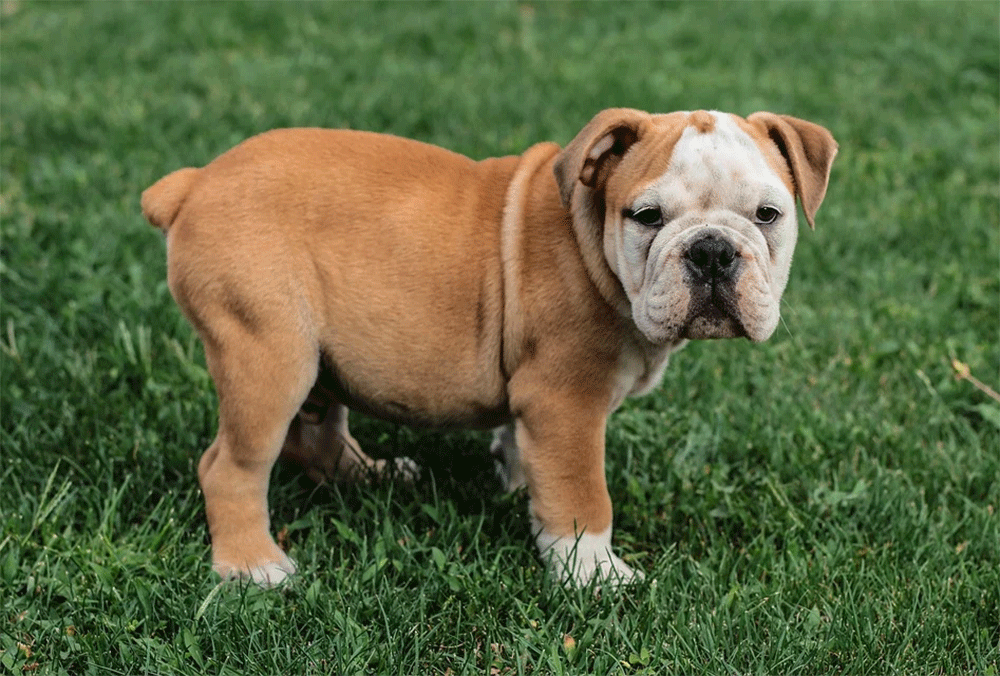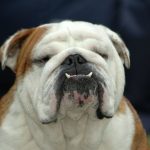The Different Shapes Of Bulldog Tails
Bulldogs are a popular breed among dog owners due to their loyal and loving personalities and their unique physical features.
While the bulldog’s tail is often associated with its signature look, there are actually several shapes that it can take on, each with its own distinct benefits and drawbacks for both the animal and its owner.
In this article, we will explore the different shapes of bulldog tails, how to identify them, and what benefits they can offer to both the animal and its owner.
History of Bulldog Tails
Contents
Bulldogs have cute, droopy tails, but did you know they were originally bred to fight bulls?
Bulldogs were popular in England during the 1700s and 1800s and often participated in bull baiting contests.
Bull baiting included two handlers holding the bull back while one handler would fight the bull with a bull whip and bulldogs.
The bull would be released and then chased and mauled by the dog until the bulldog won the match. Bull baiting was very popular in England during the 1700s and 1800s.
However, in the 1800s, bull baiting began to lose its appeal. Bull baiting was no longer popular in England because animal rights groups began protesting, arguing that it was cruel to the bulls.
Bull baiting was eventually banned in England and in other countries around the world. Bulldogs with cute, droopy tails quickly became popular once again.
Eventually, bull baiting was banned worldwide and bulldogs without tails became the norm.
Types of Bulldog Tails
There are three main types of bulldog tails; straight, curved/screwed, and kinked/knotted tails.
Each type has its own unique characteristics which can be identified by looking at the shape and length of the tail itself as well as how it moves when the dog is walking or running around.
Straight tails are typically 4-5 inches long from base to tip and taper off towards the end without any noticeable curves or bends in it.
Curved/screwed tails are slightly longer than straight tails (usually 5-6 inches), but have a distinctive bend or curve that starts near the base before tapering off towards the tip at an angle.
Kinked/knotted tails are much shorter than either straight or curved/screwed tails, usually measuring only 2-3 inches in length from base to tip.
They also tend to move more erratically than other types of tail shapes when the dog is running or playing due to their knotty appearance.
How To Identify The Different Shapes Of Bulldog Tails
Bulldogs are dogs with short, stiff tails that curl upwards at the end.
The tail of a bulldog is usually between 10 and 18 inches in length and 1.5 inches in width at its thickest part. The tail of a bulldog is typically straight and hairless, but it can have hair on the tip and base.
Bulldogs have a thick tail and a thick body, so they are powerful dogs. Bulldogs also have wide heads and a muscular neck, so they are strong dogs.
Bulldogs have round eyes and small ears, so they are cute dogs. Bulldogs have short noses and flat faces, so they are powerful dogs.
Bulldogs also have stubby legs, so they are sturdy dogs. Bulldogs have short coats, so they are low maintenance dogs.
Bulldogs have short, stiff tails that curl upwards at the end, so they are cute dogs.
The Benefits Of Different Shapes Of Bulldog Tails
There are many benefits of different types of bulldog tails.
For example, some bulldogs’ tails have curls that are small and tight, while others have big curls that hang down low. Some bulldogs’ tails are thin, while others are thick.
However, the best type of tail is one that’s thick at the end and thin in the middle. This type of tail is easy to control and fun to play with.
It’s also well suited to a good bulldog’s wagging motion.
Breeding For Desired Tail Shape
Breeding for desired tail shape can be difficult.
For example, breeding for straight tails and breeding for curled tails are both difficult.
However, breeding for desired tail shape is possible for breeders who are patient and willing to experiment.
The first step to breeding for desired tail shape is finding the desired tail shape traits.
Once a breeder has identified the desired traits, they can breed their hens with those ducks that exhibit the desired traits.
Breeders should breed their hens with ducks that exhibit the desired traits until they have the desired number of ducklings with the desired traits.
Breeders can also breed their ducks with hens that exhibit the desired traits.
Breeders should breed their ducks with hens that exhibit the desired traits until they have the desired number of ducklings with the desired traits.
Health Considerations For Different Tail Shapes In Bulldogs
Bulldogs have a variety of tail shapes.
The most common tail shape is the straight tail, which tapers to a point at the end. Other tail shapes include curled tails and docked tails.
Docked tails are cut off when puppies are young. However, this can result in phantom pain.
Docked tails are also prone to infection and injury. For these reasons, it’s best to avoid docking.
Although curled tails look cute, they pose several health risks for bulldogs. For example, curling the tail puts extra stress on the spine and can result in injury.
For this reason, it’s best to keep the tail straight or docked.
Also Read: Do French Bulldogs Have Tails?
Conclusion
In conclusion, there is a great deal of variation among bulldog tails.
However, all bulldogs have either a straight or curly tail. Bulldogs with straight tails have thick skin, while those with curly tails have thin skin.
Also, bulldogs with straight tails have wider bellies and shorter backs than bulldogs with curly tails. In conclusion, bulldogs have many different tail shapes and types.




